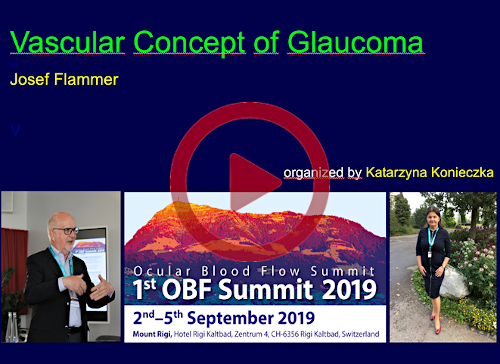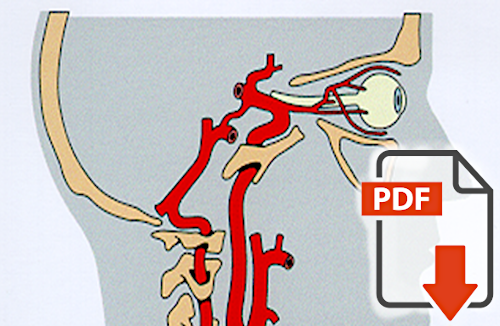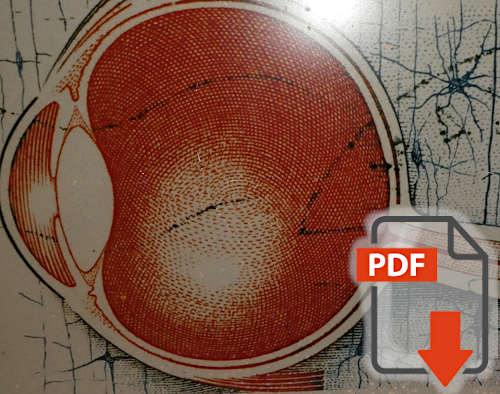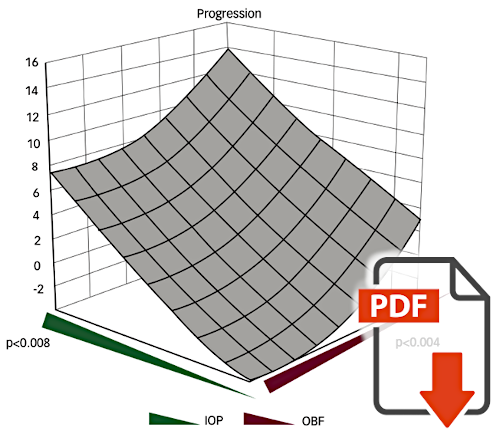| The question of how glaucoma damage develops and, in particular, what role blood flow plays in this process has interested many researchers. Already decades ago it was suspected that blood flow could play an important role in glaucoma. But for a long time, it remained difficult or even impossible to prove this, mainly because of the following reasons: a) the methods to measure ocular blood flow have developed satisfactorily only in recent times, b) there are no good animal models for glaucoma, especially not for normal tension glaucoma, c) for a long time researcher focused on atherosclerosis and its risk factors and did not notice that the dysregulation of blood vessels is just as important in glaucoma. Only the observation that low blood pressure is a risk factor had been confirmed over and over again, but still received little attention for a long time, partly because the first descriptions were not in English. In the last years this has changed and the literature has become almost confusingly large. On this webpage we have compiled the knowledge about ocular circulation and in this chapter, we present the vascular concept based on it. It is essentially Flammer's pathogenetic concept, which he described years ago. Later he developed it even further. |

J Flammer, S Orgül, VP Costa, N Orzalesi, GK Krieglstein, LM Serra, JP Renard, E Stefansson:
The impact of ocular blood flow in glaucoma |
In this review, cited well over a thousand times, Flammer et al. describe the scientific evolution of the modern understanding of the role of blood flow in glaucoma. The decisive breakthrough was made by the following observations: a) blood flow in glaucoma patients, especially in normal tension glaucoma patients, is not only localized to the eye but also systemically altered, b) it is not only a matter of arteriosclerosis, but above all also about dysregulation of blood flow and c) at least as important as the reduction of blood flow is the fluctuation of blood flow and thus the fluctuation of oxygen supply to the eye, especially to the optic nerve head and d) the resulting oxidative stress, which plays a crucial role in the activation of astrocytes and the increasing lack of energy in the axons. This energy deficiency leads to fluctuating functional decline and eventually to cell death. |

J Flammer:
The Vascular Concept of Glaucoma (Video) |
This video is a lecture given by Prof. Josef Flammer at the 1st OBF-Summit. In this video he presents step by step the vascular glaucoma concept he and his team developed. He describes, in an easily understandable form, which types of circulatory disorders lead to glaucoma damage. He explains the causes of an unstable oxygen supply, the activation of astrocytes, tissue remodeling, the development of oxidative stress in the mitochondria and the apoptosis of neuronal cells. All these processes eventually lead to the optic nerve head excavation. |

J Flammer:
The Vascular Concept of Glaucoma |
We showed you above in a video Flammer's presentation on his vascular concept. This lecture was in 2019. But already in 1994 Flammer described in this review the main features of his vascular glaucoma concept (e.g. the importance of vascular dysregulation). This lecture was in 2019, but already in 1994 Flammer described in this review the main features of his vascular glaucoma concept (e.g. the importance of vascular dysregulation). On this webpage, in the chapter on retinal veins, we have shown you a video by Flammer on retinal venous pressure. As you can see here in this review, Flammer has pointed out many years before that in glaucoma not only the arteries but also the veins are dysregulated. |

J Flammer, Mozaffarieh:
What Is the Present Pathogenetic Concept of Glaucomatous Optic Neuropathy? |
In this 2007 review Flammer et al. presented a vascular concept of the development of glaucoma damage, which already largely corresponds to our ideas of today. It is an interplay of multiple risk factors and pathomechanisms that eventually lead to damage. Vascular dysregulation, oxidative stress, astrocyte activation, and endothelin and nitric oxide formation are explained. Metalloproteases are formed in activated astrocytes and in leukocytes of the blood and enable tissue remodeling as a prerequisite for the development of optic nerve head excavation. |

J Flammer, K Konieczka, AJ Flammer:
The Role of Ocular Blood Flow in the Pathogenesis of Glaucomatous Damage |
When we talk about glaucoma and blood flow, we have been and continue to be confronted with many questions. In this overview, Flammer answers the most frequently asked questions about blood flow and glaucoma. |